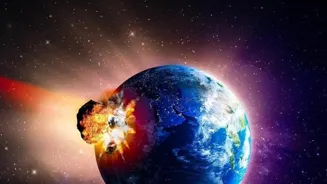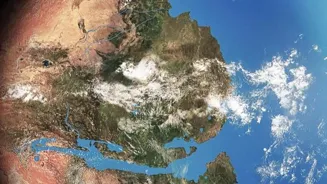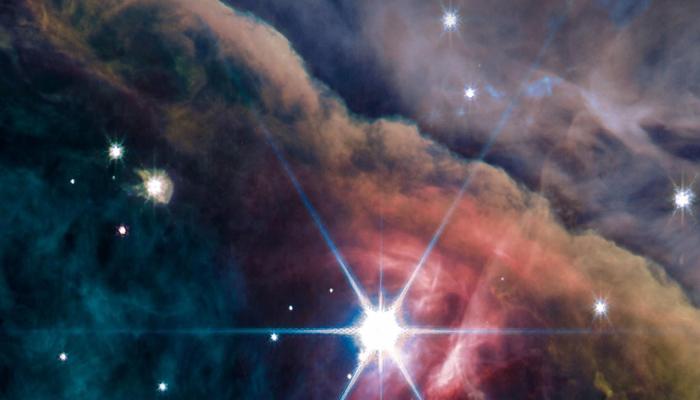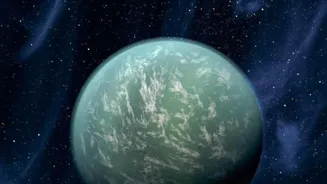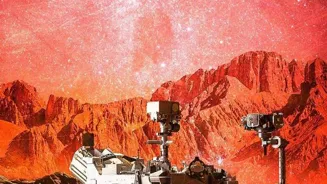Unveiling Earth's Cosmic Connections: Rocks Tell the Tale - Delve into how space events shape our planet's story!
For ages, our Earth has been going about its business, but above us, space is a real happening
place. Meteors are zooming around, asteroids are occasionally swinging nearby, and supernovas (exploding stars) are shining in the distance.
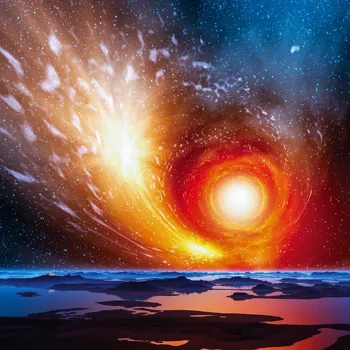
Turns out, these cosmic events aren't just a pretty sight in the night sky, they have actually shaped the Earth we know today in some pretty major ways. Geologists, the folks who study rocks and Earth's history, are finding more and more proof of these space-Earth connections.
Everything from giant meteor strikes to changes in the amount of cosmic rays bombarding our planet has played a role in how continents formed, how life evolved, and even when mass extinctions occurred. It's like Earth's history book, but with chapters written by events far, far away.
Meteors cause extinctions, craters, and disasters on Earth
One of the most direct impacts from space is, without a doubt, meteor impacts. Everyone knows about the big one that likely wiped out the dinosaurs. An asteroid about 10 kilometers wide slammed into the Yucatan Peninsula in Mexico around 66 million years ago.

The impact made a huge crater, and immediately kicked up dust and soot, blocking sunlight for months or even years. Plants withered, food chains collapsed, and lots of creatures, including the dinosaurs, went extinct. But that's not the only meteor strike in Earth's past.
There's the Vredefort Dome in South Africa, the Sudbury Basin in Canada, and many others, all reminders that Earth has been hit repeatedly throughout its history.
These impacts don't just make craters; they can also trigger earthquakes, volcanic eruptions, and tsunamis, all of which shape the Earth's surface and influence the environment.
Cosmic rays affect Earth's climate through element changes
Cosmic rays are high-energy particles that zoom through space. They come from all sorts of places, like our Sun, exploding stars, and even faraway galaxies. When these cosmic rays hit Earth's atmosphere, they can create changes in the amount of certain elements like Beryllium-10 and Carbon-14.
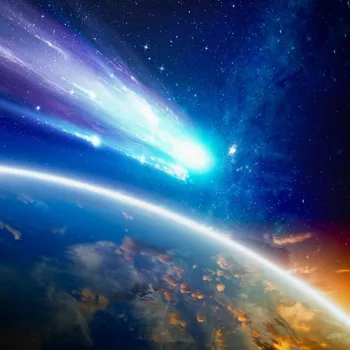
Geologists can measure these elements in rocks and ice cores to figure out how cosmic ray activity has changed over time. And it turns out that changes in cosmic ray intensity can be linked to changes in Earth's climate.
For example, some scientists believe that periods of high cosmic ray activity might have caused increased cloud formation, leading to cooler temperatures on Earth. It's a complicated relationship, but it shows how even tiny particles from space can have a big impact on our planet's history.
Earth's protective shield against space hazards
The Earth is not just a passive target getting hit by space rocks and cosmic rays. Our planet also has ways of protecting itself. The Earth's magnetic field is a big shield that deflects most of the harmful solar wind and charged particles coming from the Sun.

Without the magnetic field, Earth's atmosphere would likely have been stripped away by the solar wind, like what happened to Mars. The ozone layer in the atmosphere also protects us from harmful ultraviolet radiation from the Sun.
However, even with these protective layers, our history demonstrates that Earth is not entirely immune from cosmic influences. The magnetic field strength can change over time, and the ozone layer can be depleted by certain chemicals, making us more vulnerable to space weather.
Mass extinction events linked to cosmic activity, "Great Dying" wiped out life
For many years the link between mass extinction events and cosmic activity have been studied. The biggest extinction event was the Permian-Triassic extinction that occurred about 252 million years ago. It is called the “Great Dying” which wiped out majority life on Earth.
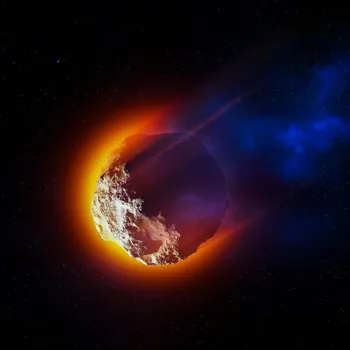
While the exact cause is still debated, some studies show the possible link to volcanism and cosmic events. Large amounts of volcanic activity can cause widespread global change, potentially triggered by impact activities which can lead to devastating impact on global life forms.
Cosmic events shape Earth's history, impact current risks
Learning about how cosmic events have shaped Earth's history is not just an interesting academic exercise. It also helps us understand the risks we face today. If an asteroid were to hit Earth today, it could have devastating consequences.

Being aware of these risks allows scientists to detect and identify potentially hazardous asteroids and comets. Earth isn't isolated. It's an active participant in a grand cosmic dance, constantly interacting with the space around it.
Understanding this interaction is key to understanding our planet's history and the challenges we face in the future.
AI Generated Content. Glance/InMobi shall have no liability for the content